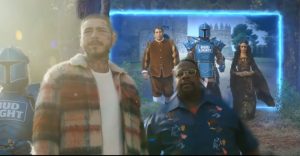Alien: Robot Chicken Exposed The Xenomorph’s Acid Blood Issue

The Xenomorph of the Alien series is one of the most memorably terrifying creatures in horror history, but the sketch comedy series Robot Chicken pointed out a pretty major plot hole in the monster’s biology. Beginning with the sparse, chilling “haunted house in space” 1979 sci-fi horror Alien from future Blade Runner director Ridley Scott, the Alien franchise has grown in the decades since into one of sci-fi horror’s most enduringly popular cinematic staples.
With three sequels, two prequels, and a pair of Xenomorph-Predator face-offs to its name, the eponymous Xenomorph of Alien fame remains an iconic monster with a place alongside Michael Myers and Freddy Krueger in the annals of horror history. Countless movies have ripped off its influential HR Giger design, but few have managed to recapture the lithe ferocity of the original beast. However, the biology of the Xenomorph has only grown more complicated and contradictory the more it has been expanded in-series, leading to numerous plot holes in the Alien franchise as fans struggle to work out just how the monster works.
For example, from the first film onwards, the Xenomorph is depicted as having blood more acidic than battery acid, with its arterial spray often melting human limbs (and, in the case of one unfortunate Aliens character, faces) and turning metalwork to ruined liquid in seconds. So, as a sketch on the goofy animated Adult Swim series Robot Chicken illustrated, shouldn’t any injured Xenomorph fall straight through the wall/floor/infrastructure that it lands or walks on? If the monster’s blood can turn metal to liquid in seconds, the many Xenomorphs injured in the James Cameron-directed Aliens, and even the lone monster bashed about in the original movie, should have poked Swiss cheese holes in the spaceship’s surfaces with their lethal blood.

It’s a bizarre plot hole that calls into question the biology of the Xenomorph itself, which seems to change based on the requirements of each movie installment in the Alien series. Alien 3 famously features a pivotal scene centering a Xenomorph egg that appears out of nowhere, the first film originally featured the Xenomorph cocooning victims as human incubators, only for these scenes to be deleted as they would have contradicted the Alien Queen’s purpose in Aliens, and the antics of Michael Fassbender’s creepy android David in Alien: Covenant make genetically-altered Xenomorphs a possibility, meaning the original movie’s eponymous Alien may not even be a thoroughbred.
However, in all these contradictions the Alien franchise never offers a clear answer for why the acidic blood of Xenomorphs is strong enough to melt through bone and steel, but never does any damage to the many spaceships that the series is set on. Ironically, a scene that sees the spaceship damaged by Xenomorph blood could have added a lot of tension and drama to the Alien sequels, and a similar sequence featuring a cabin depressurizing and starting to suck its inhabitants out into the cold darkness of space does feature in 2017’s Alien-inspired Life. However, that starry sci-fi horror had no acid-blooded Xenomorphs to speak of, and the Alien series itself has yet to make sense or take dramatic advantage of this apparent plot hole.
About The Author


















